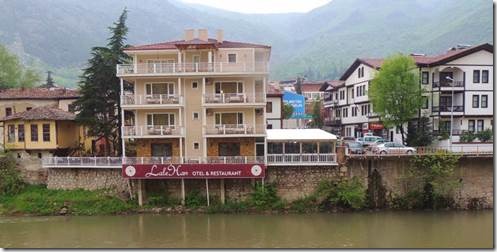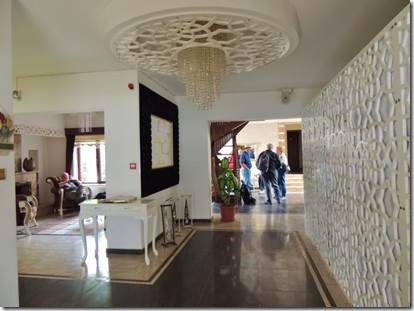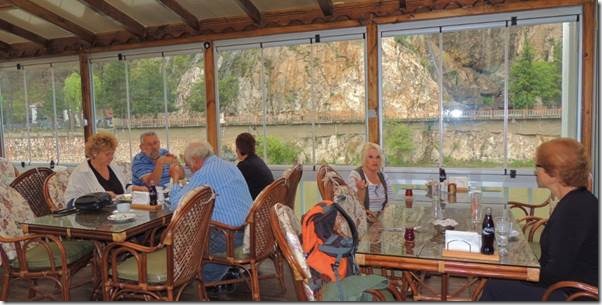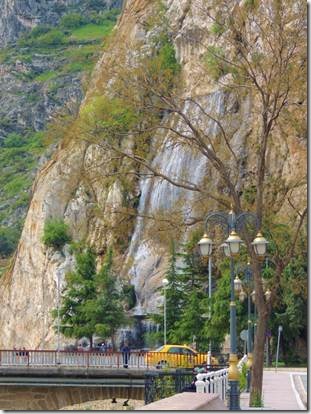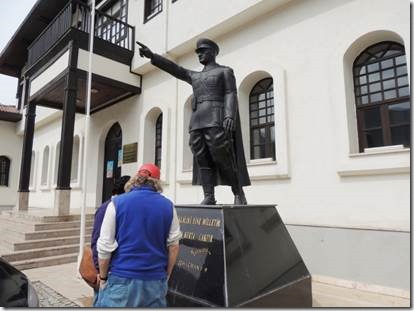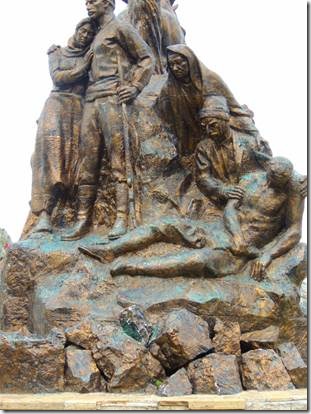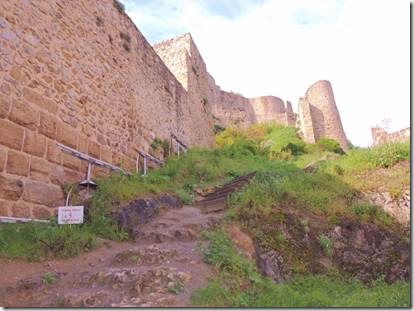Merhaba,
Today was a day for doing boat work. I went to Turkish lessons in the morning but then the afternoon was a trip to the carpet man to order a replacement carpet for the pilot house and engine room. We took the old one on the motorbike to provide a pattern. Then Randal finished replacing the hose for the saltwater wash down pump. I walked to the nearby fruit/veggie man late in the afternoon. During the day, off and on, I’ve worked on this email. I’m finally declaring it done. As Joesephine would say: done is better than good.
Ru
Amasya Day 1 part 1
Randal and I loved Amasya. It made us feel happy to be there. There was beauty, history, quaintness, if that’s a word. It’s just one of those places that exerted an emotional pull for some reason. The paths alongside the Yeşilırmak River flowing through the center of town are perfect for walking: both mornings we were there I walked the loop from our hotel, down to the clock tower and back. I even went for a short walk one evening to capture the bridge lit up at night. It was a great place to explore but wandering around.
http://www.amasyakulturturizm.gov.tr/dosya/1-280779/h/rehber-ing-mail.pdf is an excellent online guide to Amasya published by the Governorship of Amasya and definitely worth reading before you go rather than after as I’m doing.
“With its dramatic mountain-and-riverside setting, its charming old houses, mosques and antiquities, Amasya is among Turkey’s undiscovered treasures. Amasya, a provincial capital, stretches along the banks of the Yesilirmak (Green River) in a narrow mountain defile, with sheer rock cliffs rising above the town center. Ancient tombs of the kings of Pontus (3rd century BCE), carved right into the sheer rock, are floodlit at night. Many graceful old Ottoman houses have been preserved, and a few now serve as charming pensions. Other sights include several fine 13th-century Seljuk Turkish buildings, a Mongol madhouse, and a good little museum which contains, among other curiosities, a collection of local mummies! Turkey: Bright Sun, Strong Tea, my humorous travel memoir, tells how I got involved with Turkey in the first place (as a US Peace Corps Volunteer in the 1960s), how I became a travel writer, and what it’s like to be one (best job in the world?) by Tom Brosnahan whose website I “borrow” from often for info about Turkey.
http://www.turkeytravelplanner.com/go/CentralAnatolia/Amasya/
We stayed at the Lale Han Otel (Tulip Inn Hotel,) a restored Ottoman home located beside the Yeşilırmak River. It was the perfect location from which to walk everywhere and see everything. http://www.lalehanotel.com/en/amasya2.html is the hotel site with lots of photos of and information about Amasya.
| Amasya is important in the story of Atatὕrk and the creation of modern Turkey.
Saraydüzü Regimental Quarters Museum ofNational Struggle and Congress Center Owing to its historical significance, Saraydüzü Kışlası, which Atatürk used as his headquarters during his visits to Amasya and where the Amasya Circular was penned, was rebuilt (after landslides in 1935 and 1944) in compliance with the original plan on the banks of the Yeşilırmak. The building is used both as a museum housing certain documents and works belonging to the Republican Period and a culture center where various organisations are held. The Independence Museum, which is open all year round, houses reliefs and statues depicting Atatürk’s arrival in the city, the welcoming committee and the announcement of the Amasya Circular, along with numerous documents belonging to the period. http://www.amasyakulturturizm.gov.tr/dosya/1-280779/h/rehber-ing-mail.pdf |
| The Turkish War of Independence
In 1919 Amasya was the location of the final planning meetings held by Mustafa Kemal Atatürk for the building of a Turkish army to establish the Turkish republic following the collapse of the Ottoman Empire at the end of the First World War. It was here that Mustafa Kemal made the announcement of the Turkish War of Independence in the Amasya Circular. This circular is considered as the first written document putting the Turkish War of Independence in motion. The circular, distributed across Anatolia, declared Turkey’s independence and integrity to be in danger and called for a national conference to be held in Sivas (Sivas Congress) and before that, for a preparatory congress comprising representatives from the eastern provinces of Anatolia to be held in Erzurum in July (Erzurum Congress). http://en.wikipedia.org/wiki/Amasya#The_Turkish_War_of_Independence |
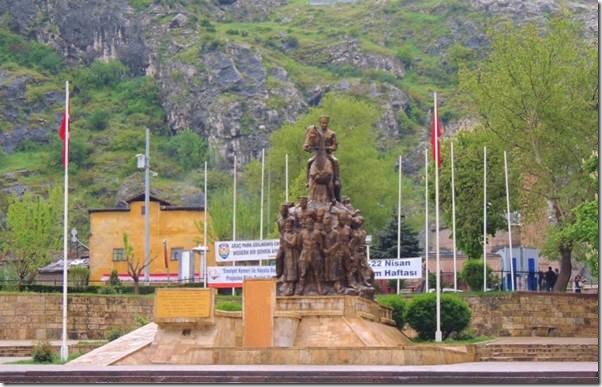
Mary Lee Settle’s impressions of the Ataturk statue now surrounded by Toruism Week banners. “…..the ever-present statue of Mustafa Kemal Atatὕrk is the finest I saw in Turkey. When the first statues were put up in the inland cities in the twenties and thirties, most of the people had just been jogged awake from a thousand years of medieval sleep by circumstance and Mustafa Kemal. Most of them had never in their lives seen a statue, as the Koran forbids the representation of humans. It stands on a crag of rock in the middle of the Centrum. Baroque, elegant, and in some ways a dangerously inept memory of him, Ataturk sits on a wonderful Delacroix horse: he is a ghazi, a warrior hero. There is no sense here of his reforms, his modern views, his dandyism, his intelligence…..he is a fighter surrounded by heroic figures from the army that he created out of almost nothing at the end of the First World War. There are the wounded, the women, the lines of his generals who look out across the river at the tomb of the Pontic kings. It was in Amasya where Ataturk found a force of mountain volunteers already formed to fight against the Greek parisans who had armed themselves to take part in the carving up of Anatolia (Turkey) by the Allies at the end of the First World War.” Turkish Reflections Back side of the statue. |
| In 1934 Atatürk wrote a tribute to the ANZACs killed at Gallipoli:
“Those heroes that shed their blood and lost their lives… You are now lying in the soil of a friendly country. Therefore rest in peace. There is no difference between the Johnnies and the Mehmets to us where they lie side by side now here in this country of ours… you, the mothers, who sent their sons from faraway countries wipe away your tears; your sons are now lying in our bosom and are in peace. After having lost their lives on this land. They have become our sons as well.” http://www.awm.gov.au/encyclopedia/ataturk.asp Aussie Peter Barker of Bowtie Lady read this piece at the end of the morning NET on ANZAC Day. It was incredibly moving. |
| We arrived dinnertime on Sunday so Monday was our first full day of exploring Amasya. |
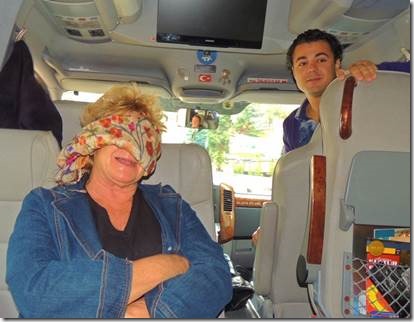
Strange picture, No? Gwen hates heights, unless she’s in an airplane and then it’s okay. She especially hates driving long winding mountain roads. Taṣ figured what she couldn’t see wouldn’t bother her. |
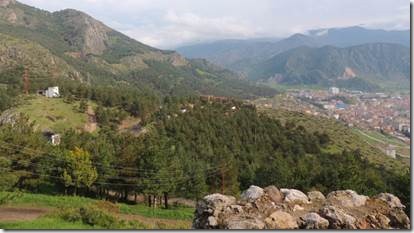
Our way to Amasya Castle |
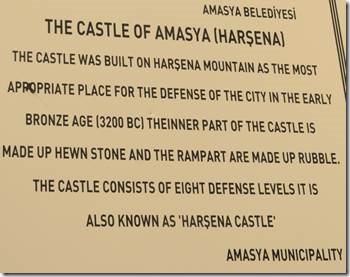
http://www.amasyakulturturizm.gov.tr/dosya/1-280779/h/rehber-ing-mail.pdf has more info about the castle. I liked it because it was a great place to climb around and see the view and get exercise. |
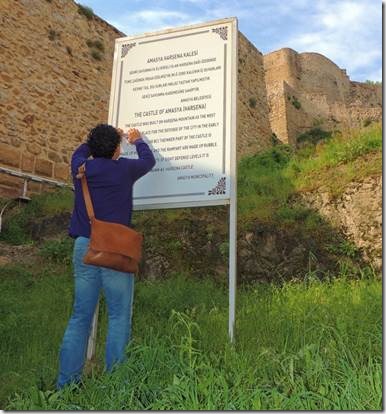
The letter R had been left out of appropriate so Taṣ was filling it in. |
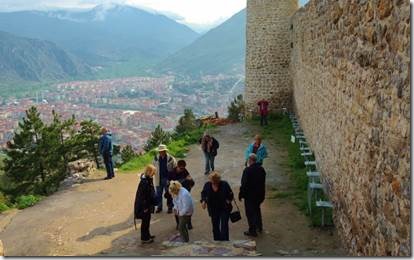
|
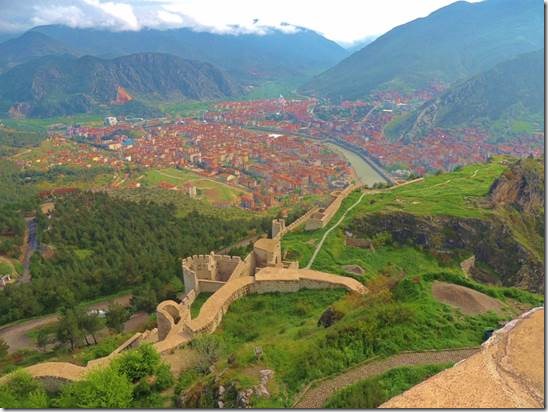
“Yesilirmak has been the source of civilizations since Chalcolithic Age in Amasya. Also the passages opened by the river in the deep valleys have ensured the safest ways for thousands of years connecting Amasya to the Central Anatolia and to the Black Sea coast and enabled the permanence of the civilizations in the region. That’s why Hattis, Hittites, Phrygians, Cimmerians, Scythians, Medes, Persians, Romans, Byzantines, Seljuks and Ilkhanids, Eretna State and of course great Ottoman Empire have left traces in Amasya.” http://www.yesilirmak.org.tr/en/destinasyon1.aspx |
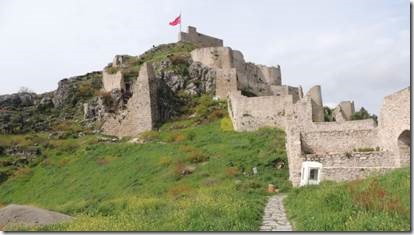 |
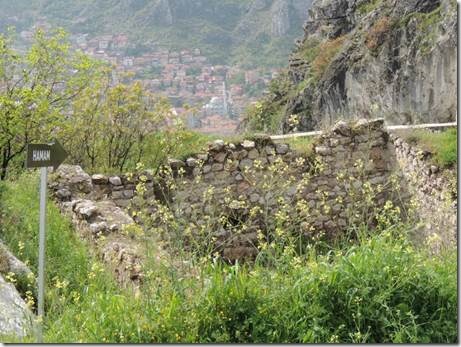
A hamam is a Turkish bath that was included at one point when the Ottomans used the castle. I remembered that we were shown the mikvah, a Jewish version of the hamam, while touring Masada. I started to research the similarities/differences but that just was so far off the topic of Amasya that I’ll have to leave it for another day. |
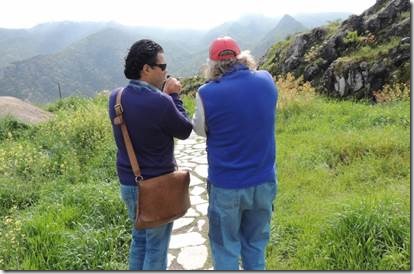
I had used a blade of grass to make a “duck caller.” Taṣ was fascinated so Randal was showing him how to make one. |
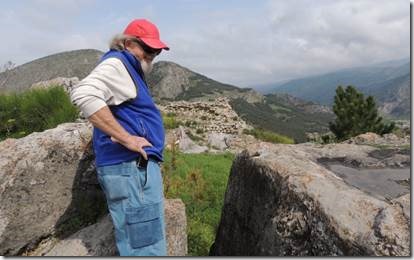
Red hat day. Randal bought three hats in Avanos, Cappadocia: red, light tan, and black. He wears a color when the mood strikes to wear that color. Our day in Amasya was certainly a red letter day! |
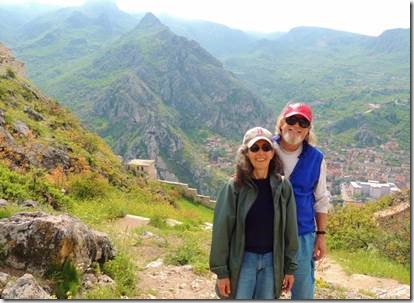
All too soon it was time to go, but Taṣ lured us back to the minibus with the promise of a coffee stop on the way back to Amasya town. |

